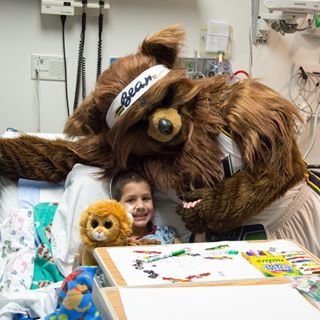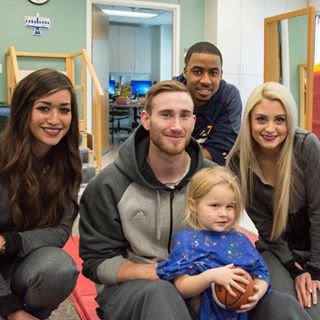Today, November 8, 2015, marks the 120th anniversary of the discovery of the X-ray by Wilhelm Roentgen, a German physicist. He used X-rays to produce an image of his wife’s hand—the most famous X-ray in the world! This breakthrough has evolved and expanded into the diverse field of medical imaging. I’m excited to recognize the importance of this day by acknowledging the International Day of Radiology and sharing some information about the amazing things happening in medical imaging.
Radiology, or Medical Imaging, is an integral part of modern medicine. Diverse imaging technologies are used in the diagnosis of both common and rare diseases.
The use of effective imaging often leads to:
- Faster, more accurate diagnosis.
- Improved treatments and outcomes.
- Eliminating exploratory surgeries.
- Avoiding extended stay in the hospital for observation.
- Minimizing the guesswork of diagnosis by physical examination alone.
Types of Imaging Technology
Most people think of X-rays when you say radiology. On average, Primary Children’s Hospital does almost 40,000 X-rays a year. You might be surprised to learn that we also do almost that many of the other types of imaging procedures each year. There are 6 main types of procedures that are used in very different circumstances.
- X-Rays are typically used in the evaluation of injuries for fractures, or to evaluate for pneumonia in a child with a cough and fever.
- Computed Tomography (CT) Scans rotate an X-ray tube around the body to produce cross sectional images. This allows us to look inside the skull for possible bleeding when a child experiences a head injury, or can be used to evaluate defects in infants with malformed hearts.
- Magnetic Resonance Imaging (MRI) uses magnetic fields to produce images. These images can show small abnormalities in a brain that may be causing seizures or can evaluate for infection in a bone.
- Ultrasound uses sound waves to create images. Ultrasound is frequently used in evaluating pediatric patients for appendicitis.
- Nuclear Medicine uses radioactive particles to assess the function of different parts of the body, such as the drainage of a dilated kidney.
- Radiation Oncology uses x-rays and other radiation to treat cancer. Forty-four percent of children diagnosed with cancer are treated with radiation therapies that are dramatically improving survival rates and saving lives.
Put Your Child’s Imaging in the Best Hands
This incredible technology is only part of the story. Radiology technologists and Ultrasonographers play a vital role in obtaining high quality images. Without their expertise in the equipment and working with patients, none of this would be possible. Imaging technologists specially trained in pediatrics make a child’s (and parent’s!) imaging experience much better. Having a solid understanding of pediatric anatomy combined with robust experience working with kids, such as gentler handling, distraction tools & techniques, and lower radiation doses allow for a safer and more effective imaging procedure.
Once the images are created, pediatric radiologists with specialized training and knowledge of anatomy, diseases, and technology interpret the images. Their expertise and experience is particularly important in the pediatric population because children are not just little adults. The injuries and diseases that they experience are unique, and require specially trained eyes.
Be assured that our entire imaging team is dedicated to putting the child first and always in every imaging procedure that we do. November 8th might be International Day of Radiology, but medical imaging and radiation oncology are making a world of difference every day.
About the Author
Share This Article
Search Our Blog
Our Instagram
 primarychildrens
210
Likes
1
Comments
primarychildrens
210
Likes
1
Comments
 primarychildrens
223
Likes
primarychildrens
223
Likes
 primarychildrens
249
Likes
2
Comments
primarychildrens
249
Likes
2
Comments
 primarychildrens
401
Likes
5
Comments
primarychildrens
401
Likes
5
Comments
 primarychildrens
327
Likes
2
Comments
primarychildrens
327
Likes
2
Comments
 primarychildrens
306
Likes
8
Comments
primarychildrens
306
Likes
8
Comments
 primarychildrens
149
Likes
primarychildrens
149
Likes
 primarychildrens
143
Likes
1
Comments
primarychildrens
143
Likes
1
Comments

Recent Posts
- Pediatric Liver Transplant Program Celebrates 200 Lives Saved and 20 Years December 30, 2015
- Is it the Cold or the Flu? December 18, 2015
- Play it Safe Outside this Winter December 15, 2015
- 10 Tips for Choosing Safe Toys this Christmas + [Infographic] December 10, 2015
- The Air We Breathe: Protecting Your Kids During an Inversion December 3, 2015
Our Most Popular Posts
 Pediatric Liver Transplant Program Celebrates 200 Lives Saved and 20 Years 27 views
Pediatric Liver Transplant Program Celebrates 200 Lives Saved and 20 Years 27 views  Why Kids Shouldn’t Wear Bulky Coats in Car Seats 21 views
Why Kids Shouldn’t Wear Bulky Coats in Car Seats 21 views  First In Nation to Receive GE Revolution Low-Dose CT Scanner 20 views
First In Nation to Receive GE Revolution Low-Dose CT Scanner 20 views  Celebrating the First X-Ray and Radiology’s Contributions to Children’s Health Care 19 views
Celebrating the First X-Ray and Radiology’s Contributions to Children’s Health Care 19 views  How VEPTR Helps Patients with Thoracic Insufficiency Syndrom (T.I.S.) 19 views
How VEPTR Helps Patients with Thoracic Insufficiency Syndrom (T.I.S.) 19 views  On Childhood Cancer: Perspectives of a Pediatric Oncologist 19 views
On Childhood Cancer: Perspectives of a Pediatric Oncologist 19 views  “It Takes an Army of Heroes . . . ” A Parent’s Perspective on Tragedy 18 views
“It Takes an Army of Heroes . . . ” A Parent’s Perspective on Tragedy 18 views  Groundbreaking Research Studying Cancer in Elephants Spurs New Funding for Childhood Cancer 18 views
Groundbreaking Research Studying Cancer in Elephants Spurs New Funding for Childhood Cancer 18 views  A Guide to Flying with Special Needs Children 18 views
A Guide to Flying with Special Needs Children 18 views  Orthopedic Care by the Numbers 18 views
Orthopedic Care by the Numbers 18 views
Archives
- December 2015 (5)
- November 2015 (8)
- October 2015 (8)
- September 2015 (2)
- August 2015 (1)
- July 2015 (3)
- June 2015 (2)
- May 2015 (2)
- March 2015 (3)
- February 2015 (2)
- January 2015 (2)
- November 2014 (1)
- October 2014 (1)
- September 2014 (3)
- August 2014 (2)
- July 2014 (4)
- June 2014 (2)
- May 2014 (4)
- April 2014 (6)
- March 2014 (4)
- February 2014 (1)
- September 2013 (1)
- February 2013 (1)
- June 2012 (1)













Add comment